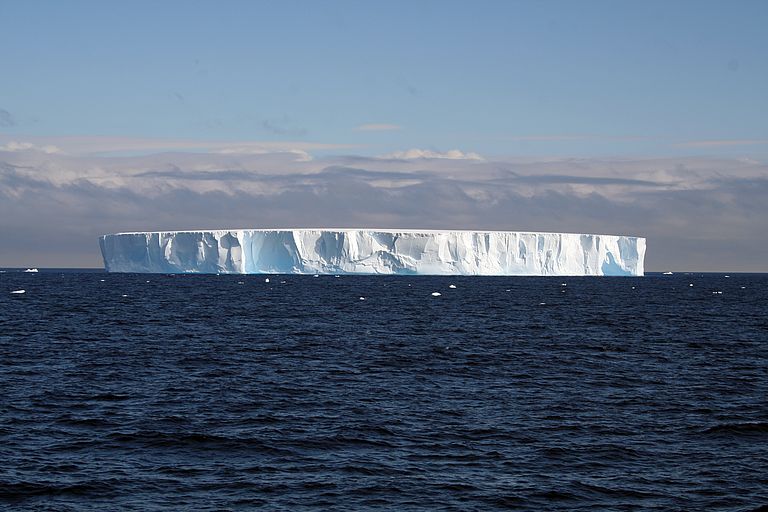Antarctica: Heat comes from the Deep
Scientists observe rising temperatures on the West Antarctic shelf
The Antarctic ice sheet is a giant water reservoir. The ice cap on the southern continent is on average 2,100 meters thick and contains about 70 percent of the world's fresh water. If this ice mass were to melt completely, it could raise the global sea level by 60 meters. Therefore scientists carefully observe changes in the Antarctic. In the renowned international journal Science, researchers from Germany, the UK, the US and Japan are now publishing data according to which water temperatures, in particular on the shallow shelf seas of West Antarctica, are rising. "There are many large glaciers in the area. The elevated temperatures have accelerated the melting and sliding of these glaciers in recent decades and there are no indications that this trend is changing,"says the lead author of the study, Dr. Sunke Schmidtko from GEOMAR Helmholtz Centre for Ocean Research Kiel.
For their study, he and his colleagues of the University of East Anglia, the California Institute of Technology and the University of Hokkaido (Japan) evaluated all oceanographic data from the waters around Antarctica from 1960 to 2014 that were available in public databases. These data show that five decades ago, the water masses in the West Antarctic shelf seas were already warmer than in other parts of Antarctica, for example, in the Weddell Sea. However, the temperature difference is not constant. Since 1960, the temperatures in the West Antarctic Amundsen Sea and the Bellingshausen Sea have been rising. "Based on the data we were able to see that this shelf process is induced from the open ocean," says Dr. Schmidtko.
Around Antarctica in greater depth along the continental slope water masses with temperatures from 0.5 to 1.5°C (33–35°F) are predominant. These temperatures are very warm for Antarctic conditions. "These waters have warmed in West Antarctica over the past 50 years. And they are significant shallower than 50 years ago," says Schmidtko. Especially in the Amundsen Sea and Bellingshausen Sea they now increasingly spill onto the shelf and warm the shelf.
"These are the regions in which accelerated glacial melting has been observed for some time. We show that oceanographic changes over the past 50 years have probably caused this melting. If the water continues to warm, the increased penetration of warmer water masses onto the shelf will likely further accelerate this process, with an impact on the rate of global sea level rise " explains Professor Karen Heywood from the University of East Anglia.
The scientists also draw attention to the rising up of warm water masses in the southwestern Weddell Sea. Here very cold temperatures (less than minus 1.5°C or 29°F) prevail on the shelf and a large-scale melting of shelf ice has not been observed yet. If the shoaling of warm water masses continues, it is expected that there will be major environmental changes with dramatic consequences for the Filchner or Ronne Ice Shelf, too. For the first time glaciers outside the West Antarctic could experience enhanced melting from below.
To what extent the diverse biology of the Southern Ocean is influenced by the observed changes is not fully understood. The shelf areas include spawning areas for the Antarctic krill, a species widespread in the Southern Ocean, which plays a key role in the Antarctic food chain. Research results have shown that spawning cycles could change in warmer conditions. A final assessment of the impact has not yet been made.
The exact reasons for the increase of the heating and the rising of warm water masses has not yet been completely resolved. "We suspect that they are related to large-scale variations in wind systems over the southern hemisphere. But which processes specifically play a role must be evaluated in more detail." says Dr. Schmidtko.
Reference:
Schmidtko, S., K. J. Heywood, A. F. Thompson, S. Aokih (2014): Multi-decadal warming of Antarctic Waters. Science, http://dx.doi.org/10.1126/science.1256
Contact:
Jan Steffen (GEOMAR, Communications & Media),
Tel.: +49 (0)431 600-2811, jsteffen(at)geomar.de
Prof. Dr. Karen Heywood (University of East Anglia, School of Sciences) K.Heywood(at)uea.ac.uk
Lisa Horton in the UEA press office on +44 (0)1603 592764 or email l.horton(at)uea.ac.uk




